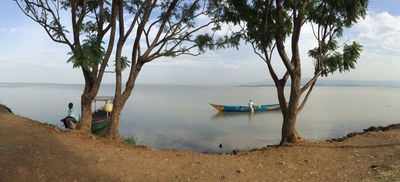Improving Health Networks: A Smart Idea
 People living with HIV have many clinical, nutritional, and social needs, all of which can seldom be met by a single provider. This fact means that clients often must visit multiple providers for services—providers that are focused on their own niche and not the comprehensive needs of clients.
People living with HIV have many clinical, nutritional, and social needs, all of which can seldom be met by a single provider. This fact means that clients often must visit multiple providers for services—providers that are focused on their own niche and not the comprehensive needs of clients.
This uncoordinated care is not optimum. Client care is better when providers are aware of appropriate services at other facilities and refer their clients to them. Such was the case in Homa Bay, Kenya, where HIV prevalence is among the highest in the country. MEASURE Evaluation sought to determine if provider networks could be strengthened to improve comprehensive care.
Using organizational network analysis, MEASURE Evaluation identified organizations providing some aspect of HIV care and investigated the ways in which they work—or don’t work—together. We identified 56 organizations and interviewed a representative from each about their services and their connections with the other 55 providers. The study found that referral connections were relatively rare and that 13 organizations made no referrals at all. Perhaps most notably, five facilities that tested people for HIV did not refer those who tested positive onward to any facility that provided treatment for HIV.
The study results were shared with the organizations, which were enthusiastic about establishing better connections and referrals. Homa Bay took advantage of the study to improve care for people with HIV simply by making better use of the services already available, without deploying new ones. They became informed of what services others were providing and began to plan and monitor their mutual coordination.
Watch a short video
or
Read the full report: Referral Network Analysis for Improved HIV Care in Homa Bay County, Kenya: Final Report












